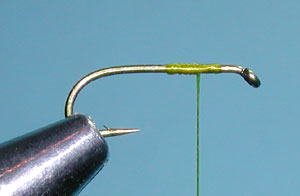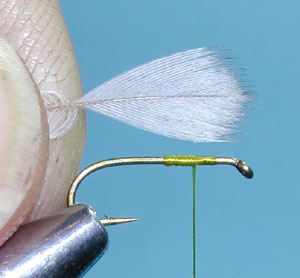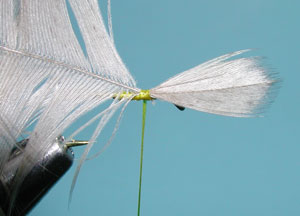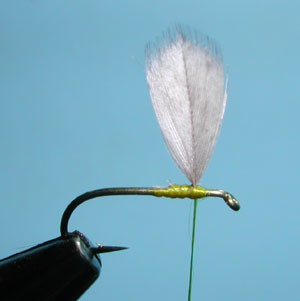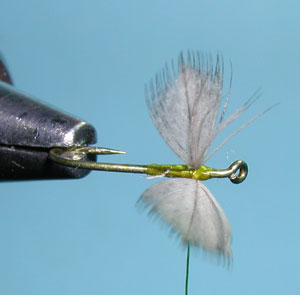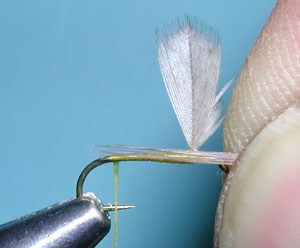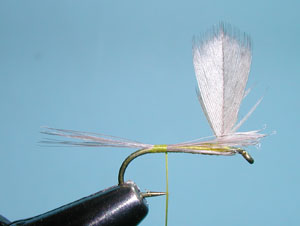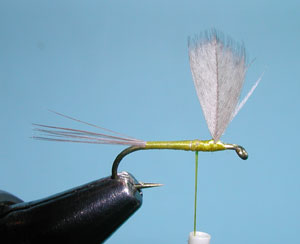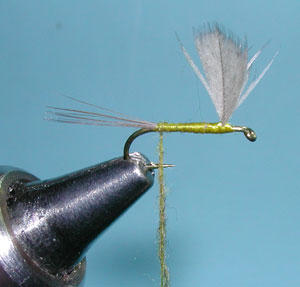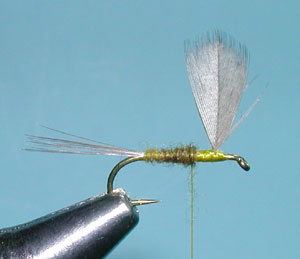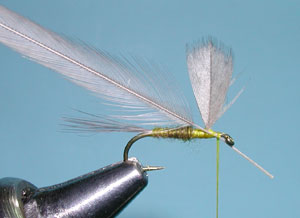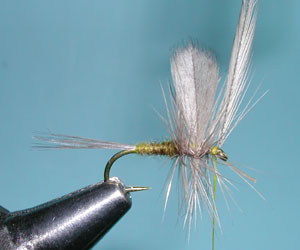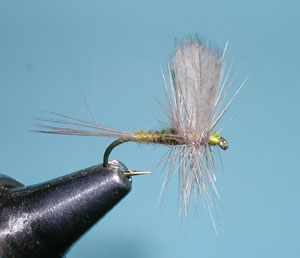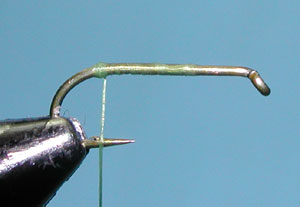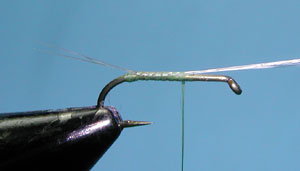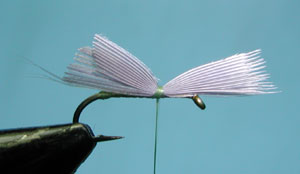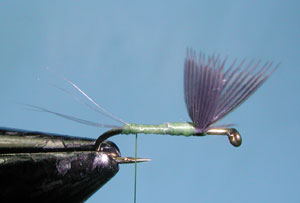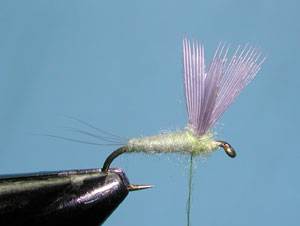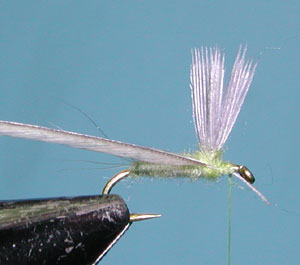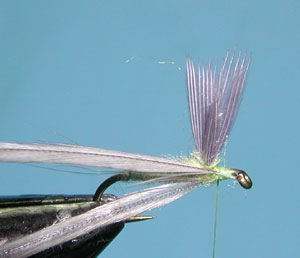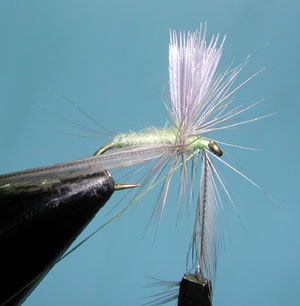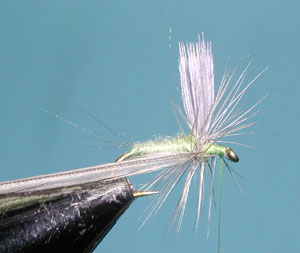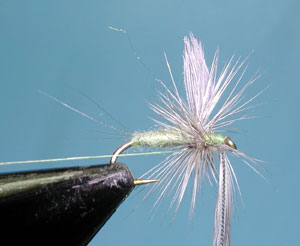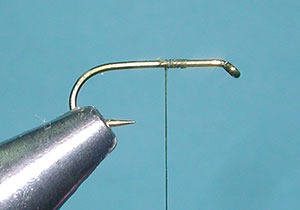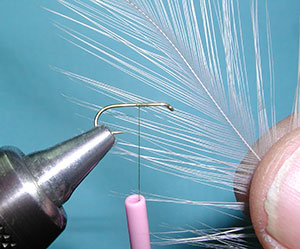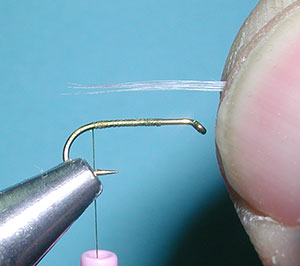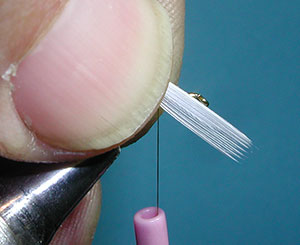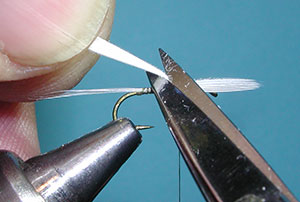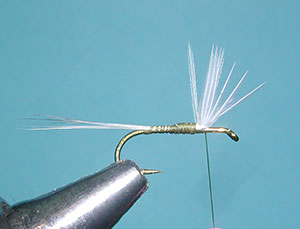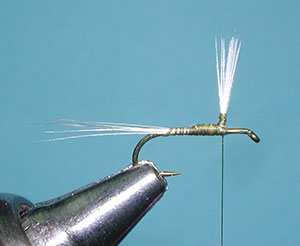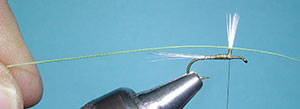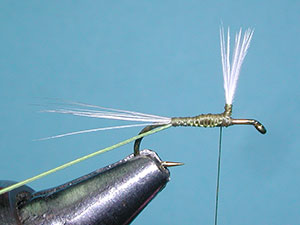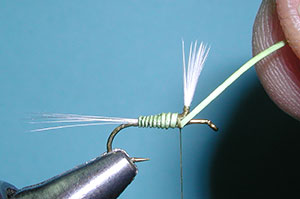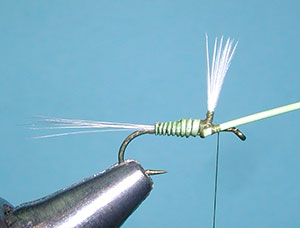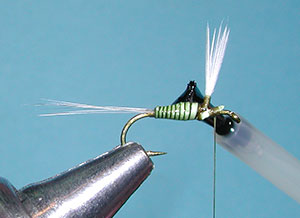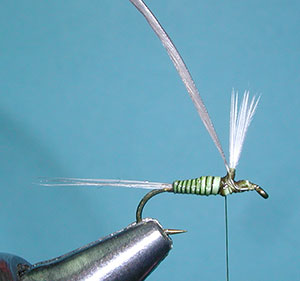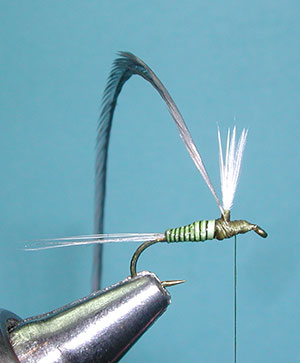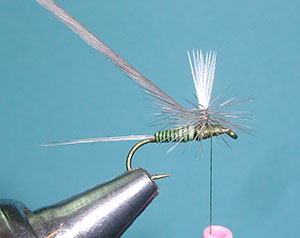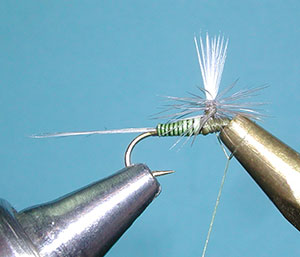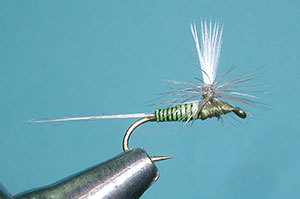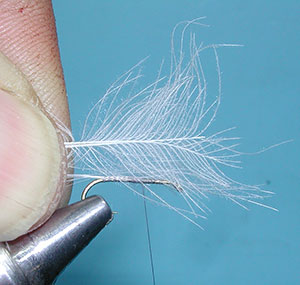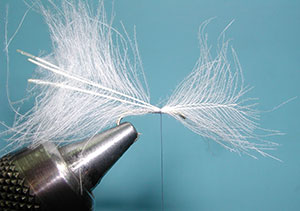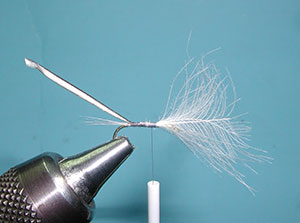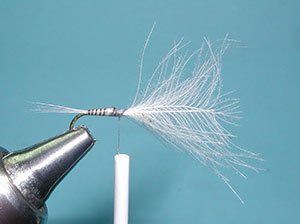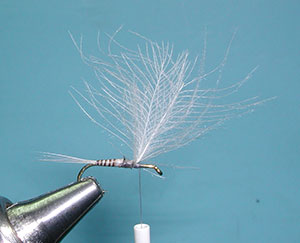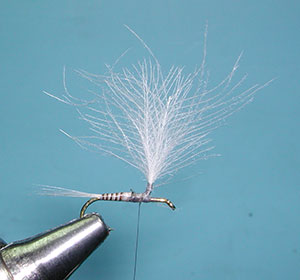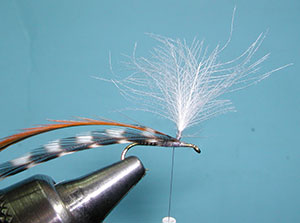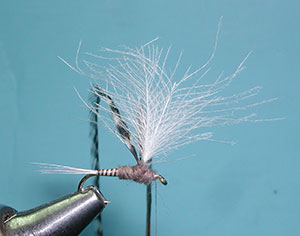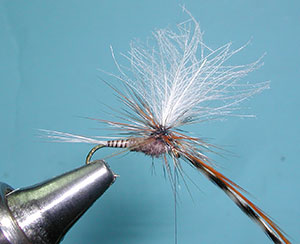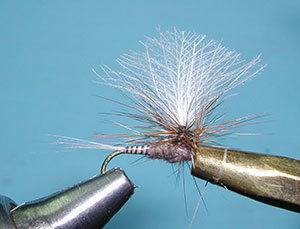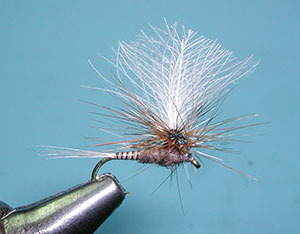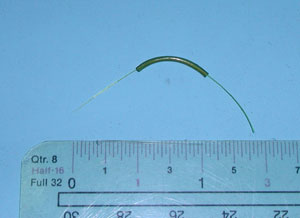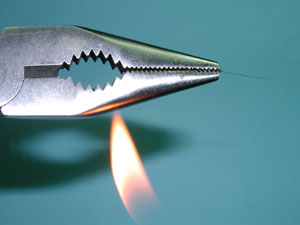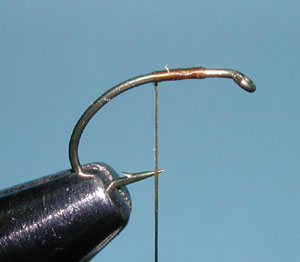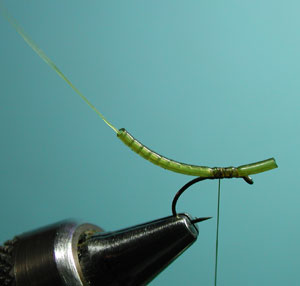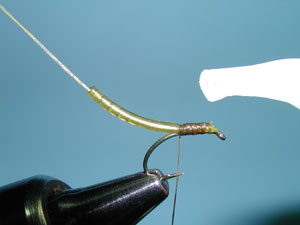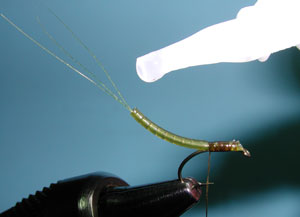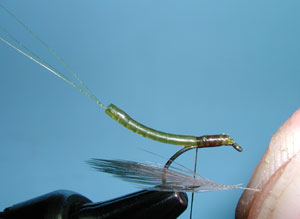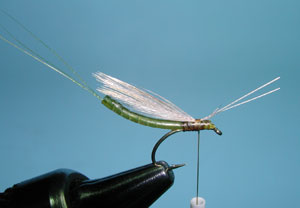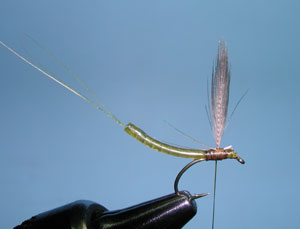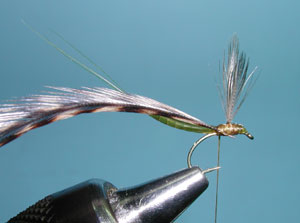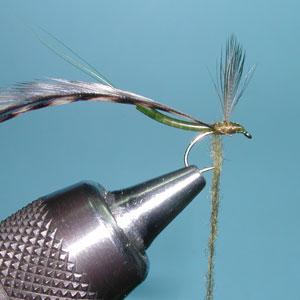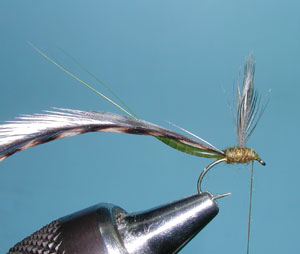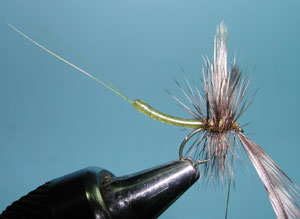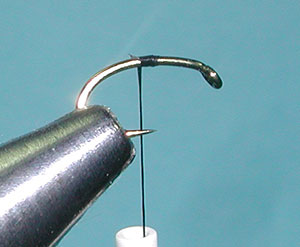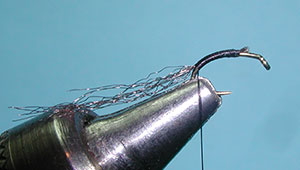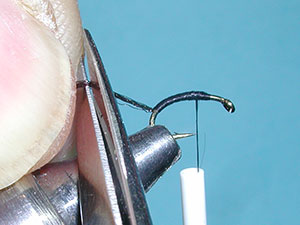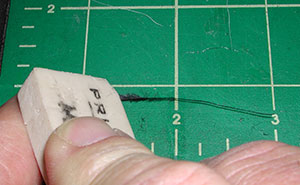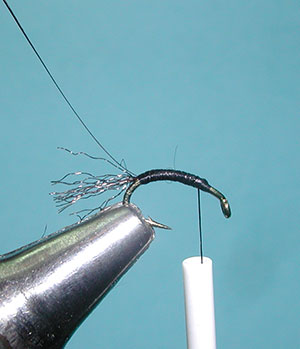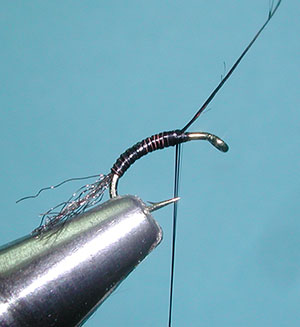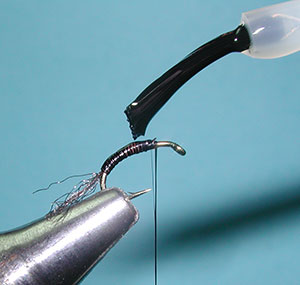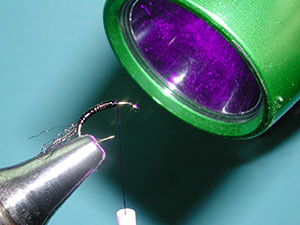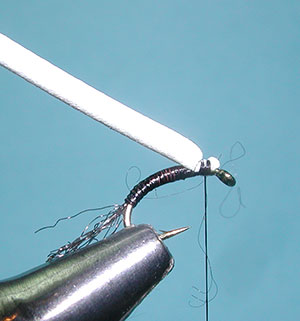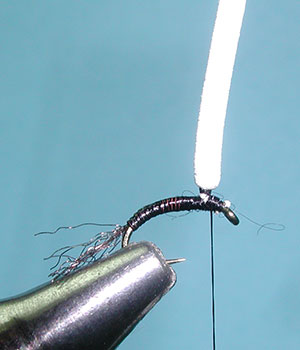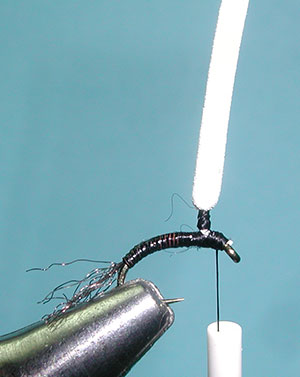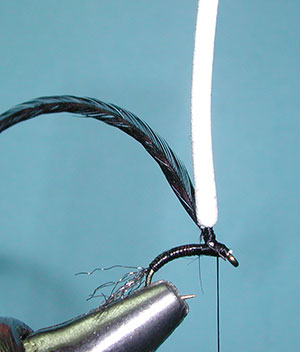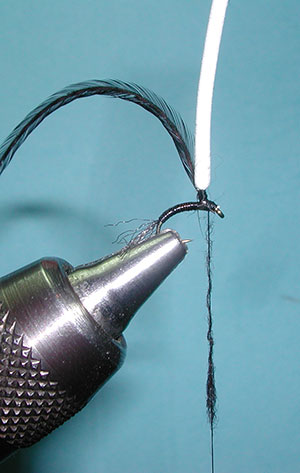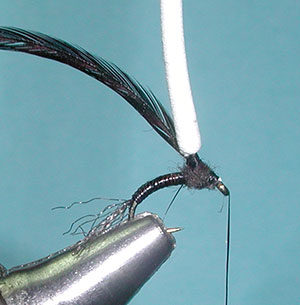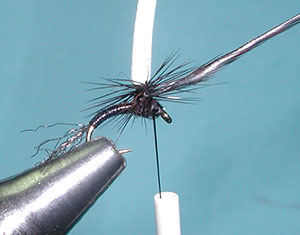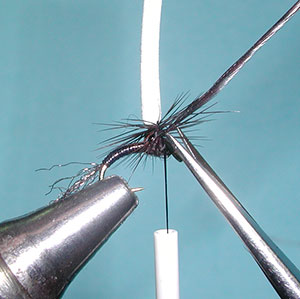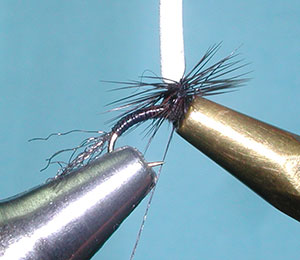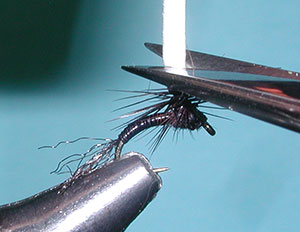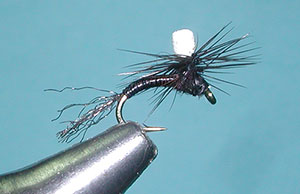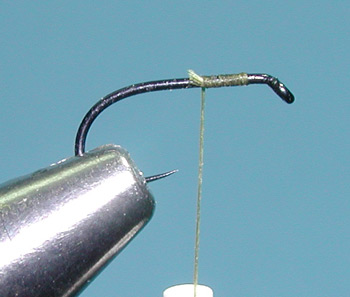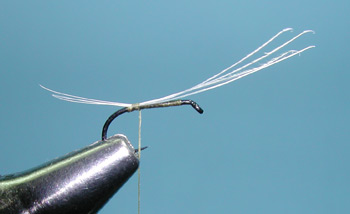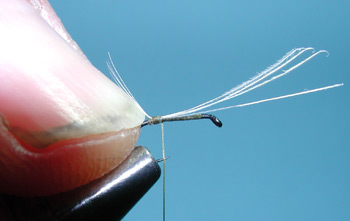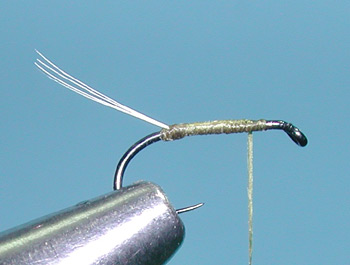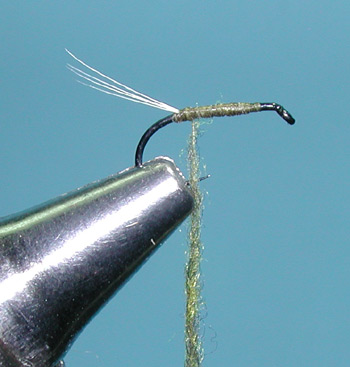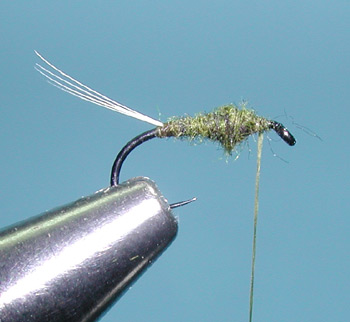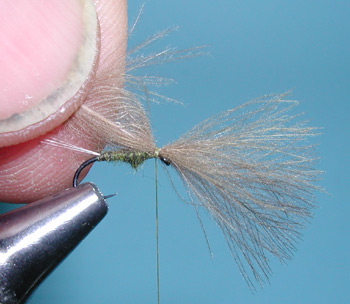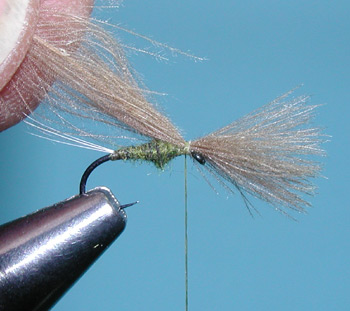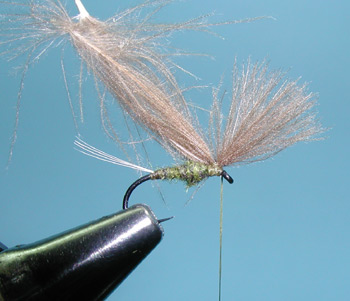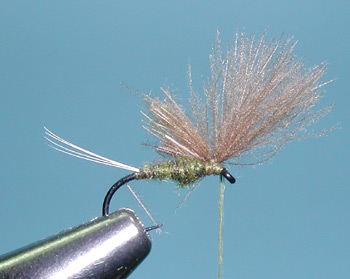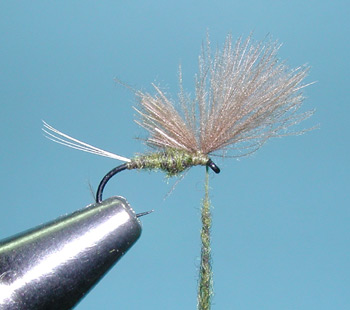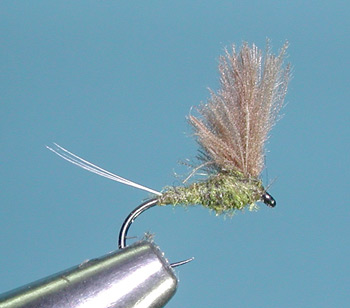Blue Wing Olive – a winter time hatch in the Sierra
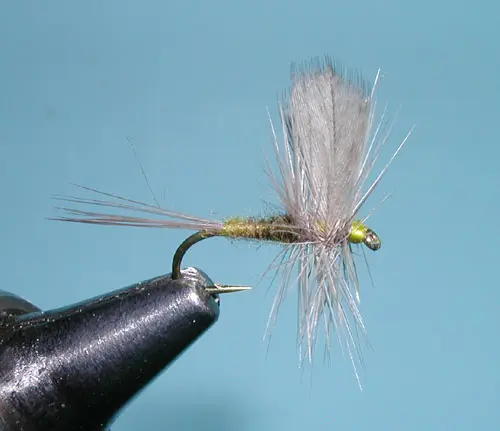
Blue Wing Olive
Tying Instructions
| Materials
to Order Material, click the link |
|
|---|---|
| Hook | TMC 100 #16-20 or TMC 102Y #15-19 |
| Thread | Danville Flymaster 6/0 Light Olive |
| Body | Blue Wing Olive Superfine |
| Tail | 8-12Medium Dun Spade Hackle Fibers |
| Wing | Dun Hen Hackle Tip |
| Hackle | Medium Dun Hackle |
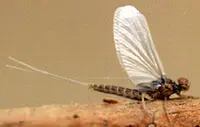
Blue Wing Olive
Life Cycle
The Blue Wing Olive mayfly might be considered to begin its life cycle on the bottom of the stream or river as a nymph. The nymph will spend 2-3 months within this form undergoing multiple moltings. When conditions are favorable, ie a cold rainy day, the nymphs will rise to the surface to “hatch”. BWO nymph’s are, generally, good swimmers hence with a torpedo-like shape. Often, the nymphs will quickly swim to the surface when they are ready to “hatch” or they take their time and drift for a period of time. Once the nymph reaches the surface, the nymph has to penetrate the surface film with the top of its back and split open.
A dun emerges from the nymphal shuck and lofts into the air. Additionally, the dun may also ride on the surface with extended legs as the wings dry before lifting off for streamside vegetation. BWO’s are rather small, in sizes 16 to 20, and are vulnerable during this time of emergence. Once the duns are able to get upon the vegetation, they will molt into spinners and the males and females will finally mate. Eventually, the female will return to the water surface to lay eggs. Some females will actually swim back down to the river bottom and lay the eggs directly onto the streambed. Finally, the females will expire on the surface with it’s wings outstretched, this is known as the “spinner fall”.
Hatches
Primarily, Blue Wing Olives prefer to hatch when it’s cool and drizzly, often in early to mid-afternoon. Although Blue Wing Olives can hatch throughout the winter, in the higher elevations of the Sierra you will most likely encounter hatches during late September through November and another hatch period in the Spring during March through June. Overall, hatches will not show up during the hot months of summer or when the winters are brutally cold. However, the lower elevations such as the Lower Owens river will have BWO hatches throughout the winter. Indeed, hatches might occur at any time. Typically, the life cycles are short, only 4 months. Ultimately, there might be 2-3 generations of BWO’s each year. The spinner adults will have varying shades of olive, gray, and brown. The wings will chiefly have a dark and smoky/blue color.
The streams or rivers with the greatest concentrations of Blue Wing Olives will have slow to moderate flowing water. Generally, back eddies can be very productive as well as foam lines.
Patterns to consider
Within the dry fly category, we have Blue Wing Olives with the standard Catskill pattern, Extended Body, and the Thorax Dun. The emergent forms are very important as the fish key upon this stage. Parachute patterns often cover this emergent form by presenting the body of the fly within the surface film. In particular, Parachute patterns allow for good visibility with a Hi-vis wing post. However, other important emergent forms are the RS2, Brooksprout, and CDC Dun. Another good fishing tip is to use a BWO dry fly with a BWO emerger trailing the dry by 24 inches.

Lifecycle of BWO
Other Patterns
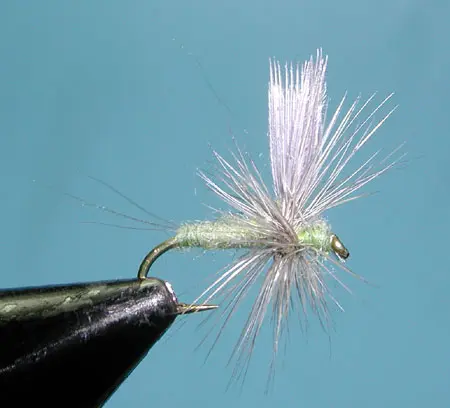
Thorax Dun, BWO
| Hook | TMC 100 #16-20 |
| Thread | Uni-thread Olive 8/0 |
| Body | Golden Olive, Superfine |
| Tail | Light Dun Microfibetts |
| Wingpost | Medium Dun Turkey Flat |
| Hackle | Light Dun Hackle |
Tying Instructions
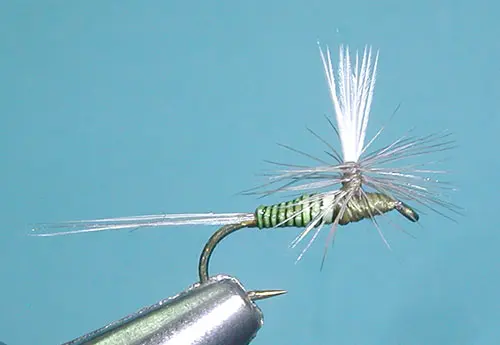
Quilled Parachute, BWO
| Hook | TMC 100 #16-20 |
| Thread | Uni-thread Olive 8/0 |
| Body | BWO Dyed Quill |
| Thorax | Blue Wing Olive Superfine |
| Tail | 8-12 Medium Dun Spade Hackle Fibers |
| Wingpost | White Turkey Flat |
| Hackle | Medium Dun Saddle |
Tying Instructions
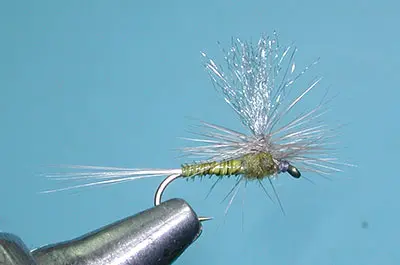
Biot Body Parachute Dun, BWO
| Hook | TMC 100 #16-20 |
| Thread | Veevus 14/0 Gray |
| Body | Olive Turkey Biot |
| Thorax | Olive Superfine |
| Tail | 8-12 Medium Dun Spade Hackle Fibers |
| Wingpost | Z-lon Dun |
| Hackle | Medium Dun Saddle |
Tying Instructions
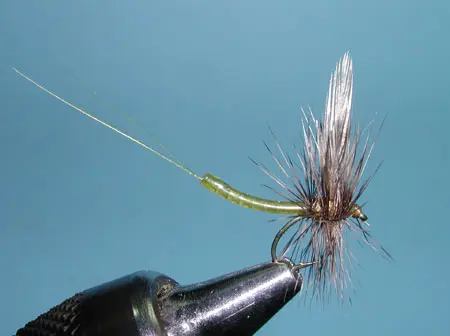
Extended Body, BWO
| Hook | TMC 2487 #16-18 |
| Thread | Uni-thread Olive 8/0 |
| Body | Olive Hollow Tubing, standard |
| Thorax | Blue Wing Olive Superfine Dubbing |
| Tail | 3 Olive Microfibetts |
| Wing | Medium Dun Hen Cape Hackle |
| Hackle | Grizzly Dun Hackle |
Tying Instructions
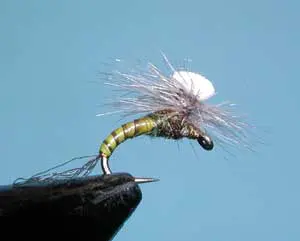
Brooksprout, BWO
| Hook | Daiichi 1120 #16-22 |
| Thread | Uni-thread Olive 8/0 |
| Body | Olive Turkey Biot |
| Thorax | Blue Wing Olive Superfine |
| Shuck | Olive Brown Z-lon |
| Wingpost | 1/16 |
| Hackle | Light Blue Dun Hackle |
Tying Instructions
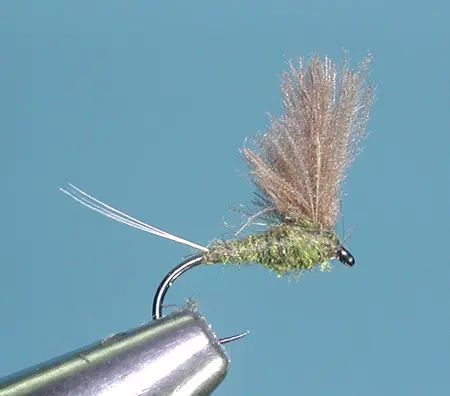
CDC Dun, BWO
| Hook | TMC 103bl #19-21 |
| Thread | Uni-thread Olive 8/0 |
| Body | Blue Wing Olive Superfine |
| Thorax | Blue Wing Olive Superfine |
| Tail | Light Dun Tailing Fibers |
| Wing | Med Dun CDC |
| Hackle | Ginger Hackle |

